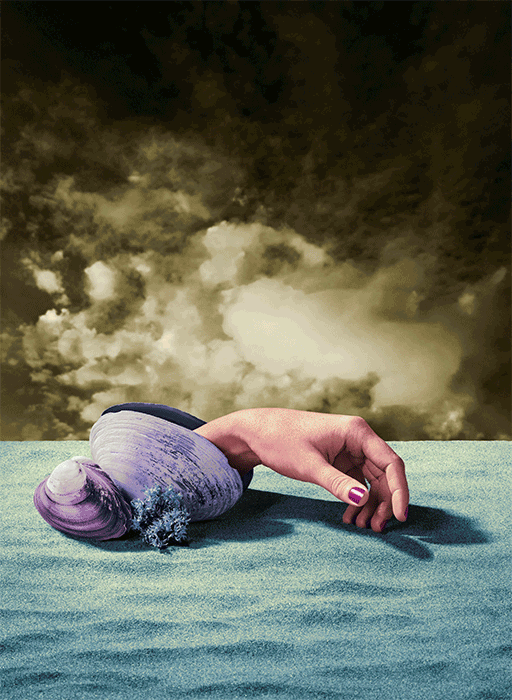~ Homage ~
In this series, I pay homage to the many female artists who have historically worked in the discipline of photomontage and whose significance to the history of photography have often been excluded. Through research into their artworks and practice, I selected one image per artist to recreate. With a very careful attention to detail, I replicated the composition and added my own personal touch to them using color and/or movement. These otherwise still images have been brought to life through my own artistic process, and are meant to be a humbling adoration of the creativity and ingenuity that these artists brought to their work. Through direct conversation with these artists images, my goal is to draw attention to these overlooked artists who have been a source of inspiration in my practice for many years.
Dora Maar Untitled (Hand-Shell) 1934.
Often known as the lover of muse of Picasso, Dora Maar studied photography in Paris and became a successful photographer and painter. This Croatian-French artist created inventive photomontages that were a part of surrealist exhibitions, in which few women were included.
Grete Stern, Los sueños de renacimiento (dreams of rebirth), in: Idilio no.28, June 7, 1949.
Between 1948-1951, German-Argentine photographer Grete Stern created a large body of work called “Dreams” for the Argentinian women’s magazine Idilio. The images were based on the readers own dreams, and Grete’s surrealist interpretations accompanied the column “Psychoanalysis will help you”. The images often depicted the struggles and oppression of working class women, and were meant to push back against traditional gender roles.
Eileen Agar, Marine Collage, 1939.
British-Argentinian surrealist artist Eileen Agar is mostly known for her paintings, however she also worked with collage and sculpture using found objects related to nature and the sea. She was also one of the few women that were part of surrealist groups and whose works were exhibited in prominent exhibitions such as the London International Surrealist Exhibition in 1936.
Emila Medková, Cascade of Hair, 1949.
Czech photographer Emila Medková was part of a circle of post-war Czech surrealist artists. A time of Soviet rule, artists works were often censored and is the reason why there is little known about her and her work. From a series of works called Shadowplay, this image focuses on the everyday concrete irrational, confusing the meaning between objects.








